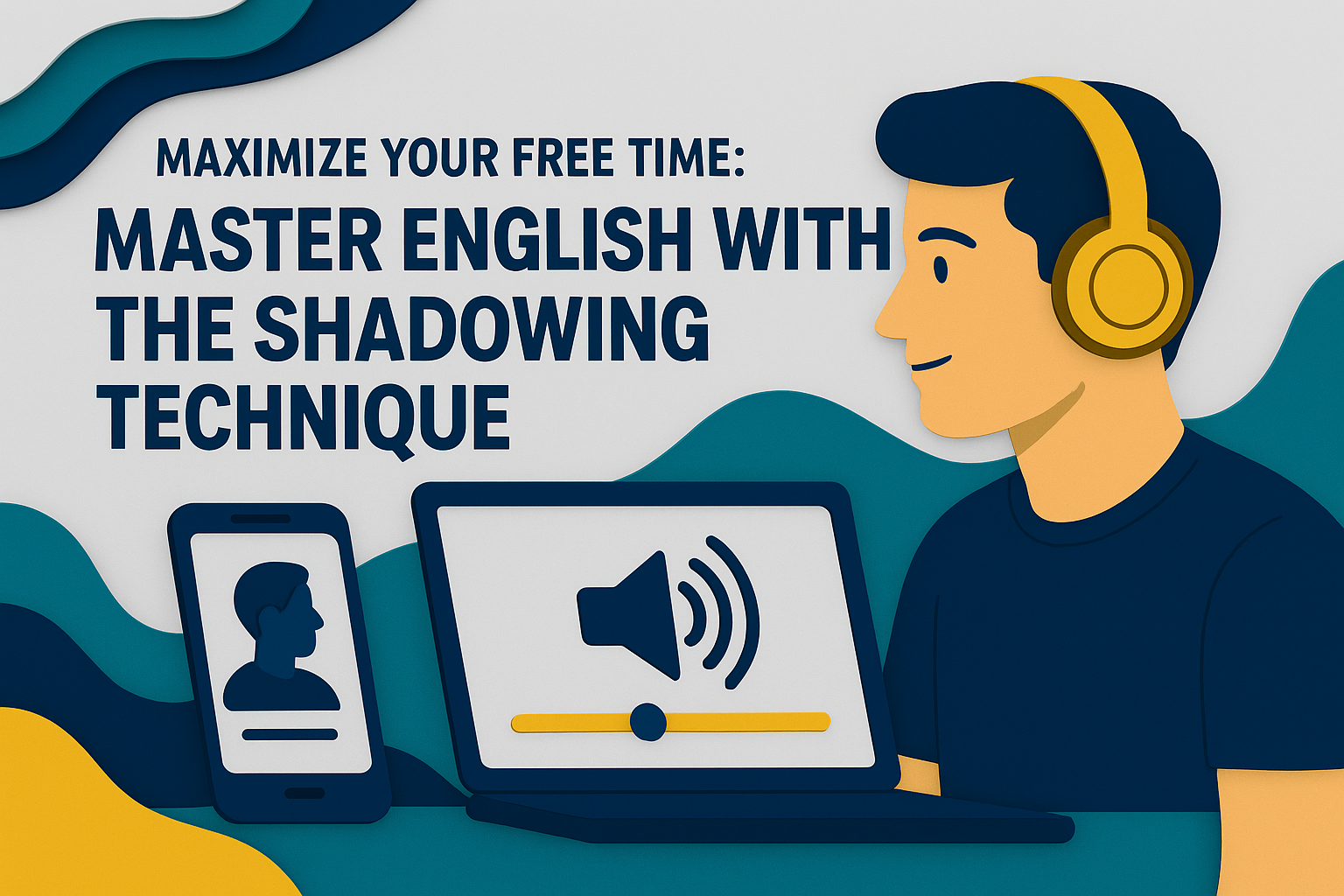Maximize Your Free Time: Master English with the Shadowing Technique for English Practice 🎧
Intermediate Level | November 11, 2025
혼자서 기사를 소리 내어 읽거나 튜터를 따라 각 단락을 반복해서 읽으세요. 레벨...
Do you ever wish you had more time to practice English? Between work, meetings, and family, finding an extra hour feels impossible. But what if you could turn your commute, lunch break, or daily walk into a powerful English lesson? That’s exactly what the shadowing technique for English practice allows you to do.
The shadowing technique for English practice is one of the fastest ways to improve pronunciation, listening, and speaking—all at the same time. It’s simple: you listen to a native English speaker and repeat what they say, as closely and quickly as you can. It feels a bit like singing along to a song, but with speech. You’re training your ears, your mouth, and your brain to work together naturally.
How the Shadowing Technique for English Practice Works
When you shadow, you don’t wait for the speaker to finish. You listen and speak almost simultaneously, just a second behind them. At first, it might feel strange or even stressful—but that’s normal! Over time, your brain adapts, and you’ll find yourself understanding and imitating speech patterns faster than before.
Try starting with short materials: a podcast clip, a TED Talk excerpt, or even one of our All About English Mastery videos. Listen once, then shadow the second time. Focus on intonation, stress, and rhythm, not just the words.
Why the Shadowing Technique for English Practice Works So Well
The beauty of shadowing is that it uses active listening and speaking practice at once. You’re not just hearing English—you’re producing it. That means your brain gets double the input, which helps you:
- Build natural pronunciation and rhythm
- Improve listening comprehension
- Strengthen muscle memory for speaking
- Train your brain to think in English instead of translating
Even five to ten minutes of shadowing daily can dramatically boost your fluency.
Tips for Using the Shadowing Technique in Your Free Time
- Start Small: Begin with short, simple videos or audio clips. Two minutes is enough to start.
- Choose Topics You Enjoy: If you love business, use a business podcast. If you love stories, use a short narration.
- Focus on Clarity, Not Speed: Don’t worry if you can’t keep up at first. Speak clearly and match the speaker’s tone.
- Repeat and Record: Record yourself, listen back, and notice where you can improve.
- Stay Consistent: Shadow a little every day. You’ll be amazed how quickly you sound more natural.
A Practical Example
Let’s say you listen to a TED Talk about leadership. You play 30 seconds, pause, and shadow. You mimic the speaker’s tone, rhythm, and even pauses. After two or three tries, you start sounding smoother—and your ear catches more details. That’s progress you can hear.
Shadowing turns idle moments into growth opportunities. It’s perfect for busy professionals who want to improve English without textbooks or long study sessions.
Vocabulary List
- Shadowing (noun) — Repeating speech as you hear it to practice language skills.
Example: The student used shadowing to improve her pronunciation. - Intonation (noun) — The rise and fall of the voice when speaking.
Example: His intonation made the sentence sound more natural. - Rhythm (noun) — The natural flow and timing of speech.
Example: English rhythm helps listeners understand meaning and emotion. - Simultaneously (adverb) — At the same time as something else.
Example: She listened and spoke simultaneously during practice. - Stress (noun) — The emphasis placed on certain words or syllables.
Example: In English, we put stress on key words for meaning. - Muscle Memory (noun) — The ability to perform actions automatically after practice.
Example: Repetition builds muscle memory for fluent speech. - Comprehension (noun) — The ability to understand something.
Example: Shadowing helps improve listening comprehension. - Fluency (noun) — The ability to speak easily and smoothly.
Example: Her fluency improved after months of shadowing practice. - Imitate (verb) — To copy someone’s actions or speech.
Example: He imitated the speaker’s tone to sound more natural. - Consistency (noun) — Doing something regularly without stopping.
Example: Consistency is key when practicing the shadowing technique.
5 Questions About the Article
- What is the shadowing technique for English practice?
- Why is shadowing considered effective for busy professionals?
- What should you focus on while shadowing?
- How long should a daily shadowing session be?
- Why is recording yourself useful when practicing?
5 Open-Ended Discussion Questions
- Have you ever tried shadowing before? How did it feel?
- What kinds of materials would you enjoy shadowing—podcasts, videos, or speeches?
- How can the shadowing technique for English practice help you think more naturally in English?
- What challenges might you face when shadowing, and how could you overcome them?
- How could you include shadowing in your daily routine?
📢 Want more tips like this? 👉 Sign up for the All About English Mastery Newsletter! Click here to join us!
Want to finally Master English but don’t have the time? Mastering English for Busy Professionals is the course for you! Check it out now!
Follow our YouTube Channel @All_About_English for more great insights and tips.



